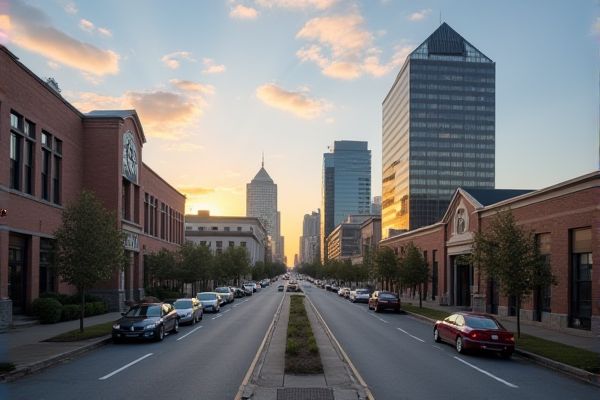
Transportation and commuting in Alabama: Limited public transportation options. Most residents rely on cars. Several carpooling opportunities available. Interstate highways cross the state. Birmingham offers most extensive transit system. Huntsville's growing rideshare services. Amtrak service from Birmingham. Minimal biking infrastructure. Limited walkability in suburban areas. Relatively low traffic congestion outside cities.
Limited public transportation options.
In Mobile, Alabama, public transportation options are limited to specific routes and schedules, with The Wave Transit System serving key locations but not covering the entire city comprehensively, highlighting the need for more extensive public transit services.
Most residents rely on cars.
Most residents in Alabama rely heavily on cars for commuting, with the state's average commute time of 23.5 minutes and a significant increase in commuters driving to work from farther afield, particularly into the major cities of Birmingham, Huntsville, Montgomery, and Mobile.
Several carpooling opportunities available.
CommuteSmart offers various carpooling opportunities in Alabama, including ridematching services in the Birmingham, Huntsville, and Montgomery metro areas, helping commuters save money, reduce traffic congestion, and improve air quality. The program also provides incentives such as the GetGreen and CommuterClub programs, which offer financial rewards for using alternative transportation methods.
Interstate highways cross the state.
Alabama has 11 Interstate Highway routes, totaling 1,130 miles, with the longest segment being Interstate 65 at 367 miles and the shortest being Interstate 359 at 2.3 miles. These highways connect major cities and metropolitan areas, including Birmingham, Mobile, and Montgomery. For more detailed information on these routes, you can visit the Interstate Highway list for Alabama which provides extensive insights into their significance and layout within the state.
Birmingham offers most extensive transit system.
Birmingham offers the most extensive transit system in Alabama, operated by the Birmingham-Jefferson County Transit Authority (BJCTA), which includes a bus rapid transit line called the Birmingham XPress, microtransit services, and 31 fixed bus routes. Despite facing challenges such as lack of state funding and limited suburban coverage, the city continues to strive for efficient public transportation options. For more detailed insights, visit the Inside Climate News website.
Huntsville's growing rideshare services.
In Huntsville, Alabama, rideshare services such as Uber and Lyft are widely available, offering various service levels including standard and larger capacity options. Drivers set their own hours and earn an average of $16.02 per hour before expenses, with the majority of each fare going to the driver and a commission to the rideshare company. For more detailed information about rideshare options in Huntsville, visit Ride.Guru, where you can explore the specifics of transportation offerings in the area.
Amtrak service from Birmingham.
Birmingham, Alabama, is served by Amtrak's Crescent route, which provides daily service between New York City, Atlanta, and New Orleans. The Birmingham Intermodal Facility, opened in 2017, combines Amtrak passenger rail with other modes of ground transportation, including bus services and a bike program. To learn more about the area's transit options and connectivity, you can visit the Birmingham Intermodal Facility page. This innovative hub ensures seamless travel experiences for locals and visitors alike, enhancing Birmingham’s accessibility and mobility.
Minimal biking infrastructure.
Alabama's current transportation infrastructure lacks extensive biking infrastructure, with the state recognizing the need to improve connections between pedestrian and bicycle facilities, and to increase the miles of bicycle lanes, multi-use paths, and signed bicycle routes to enhance safety and accessibility. For further insights into this initiative, you can view the detailed plans in Alabama's Statewide Bicycle and Pedestrian Plan, which outlines the strategies proposed to foster a more bike-friendly environment.
Limited walkability in suburban areas.
Limited walkability in suburban areas of Alabama is a significant issue, as urban sprawl leads to longer commute times and greater reliance on automobiles. Residents living in these sprawl-prone areas find themselves commuting farther distances and experiencing limited access to safe, complete sidewalks or bike paths. This challenge highlights the growing need for comprehensive urban planning solutions, as noted in the Impact of Urban Sprawl study. As communities grapple with these challenges, there is an urgent call to create environments that promote healthier, more sustainable living conditions.
Relatively low traffic congestion outside cities.
While Alabama experiences significant traffic congestion in its major cities, with drivers in areas like Birmingham and Huntsville losing substantial hours to congestion annually, the state's rural and less populated areas generally have lower levels of traffic congestion compared to the urban centers. For more detailed information on this issue, visit the Business Council of Alabama website.
